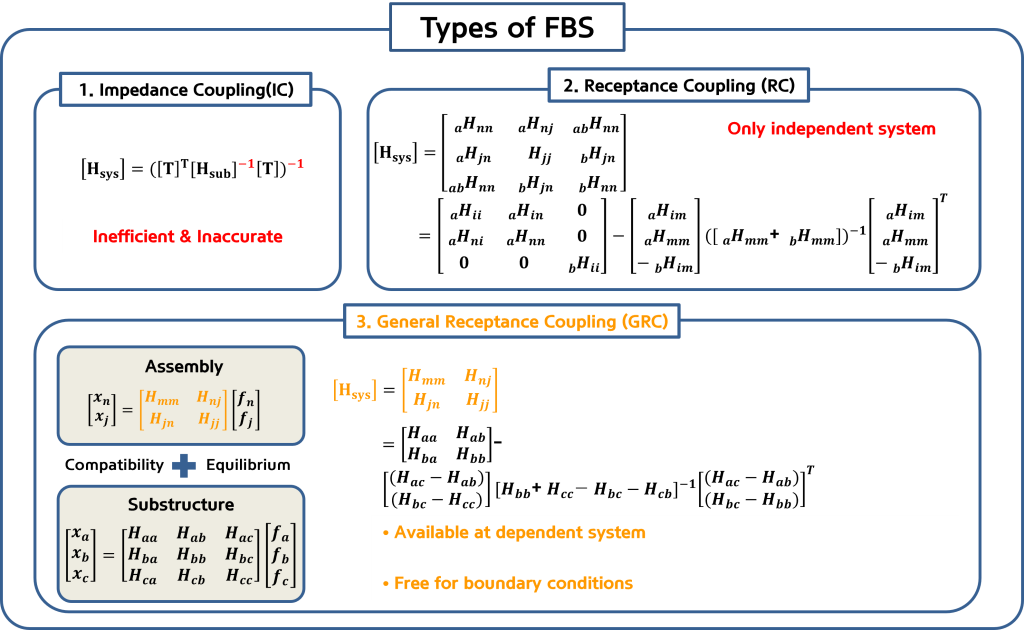Dynamic Substructuring (FBS)
Advanced vehicle development process based on V-Shape model
The recent vehicle development process is oriented towards the V-Shape process as shown below. In the past, vehicle development was an inefficient serial structure that repeated evaluation and re-evaluation after manufacturing the entire vehicle.
However, recent vehicle development has enabled the V-Shape model process to utilize a more efficient preceding development stage that enables parallel research by cascading system level.
Through the V-Shape model, we have been able to independently develop each part before body styling fixes at the end of development through numerical modeling and experimental evaluation at each level.

Dynamic Substructuring
Dynamic Substructuring is a technique used to predict system performance in the process of cascading and integrating system levels through the V-Shape model. It predicts the dynamic properties of the combined structure based on the condition of force equilibrium and displacement compatibility at the joint point of the combined structure. There are three domain analyzes in Dynamic Substructuring. There is a Direct Coupling technique that analyzes in the Physical Domain, a CMS technique that analyzes in the Modal Domain, and finally an FBS technique that analyzes in the Frequency Domain. The most used analysis method in our lab is the FBS technique.

FBS (Frequency Based Substructuring)
FBS predicts the dynamic property information of the assembly through the dynamic property information of each component. When substructures are coupled, force equilibrium and compatibility conditions are satisfied. The connection properties of a joint should be considered on the substructure interface. The compatibility condition is that the displacement of each substructures should be correspond with that of assembly. And also, the force equilibrium condition is the sum of applying forces at the substructures should be correspond with the applying force at the assembly. Analysis can be performed with the following algorithm, which can be derived by applying the Force Equilibrium and Displacement Compatibility conditions, which are the basis of Dynamic Substructuring as above. By using measured FRF information at frequency domain, we can proceed the analysis of the assemblies.



